Abstract
Target cell killing by lymphocytes can be induced by appropriate antibody complexed to target cell antigens. In this paper it is shown that this form of lymphocyte mediated cytotoxicity is susceptible to inhibition by third party immune complexes which compete with target cell bound antibody for receptors for immunoglobulin on the cytotoxic lymphocytes. The physical state of the complexes is investigated in relation to their inhibitory efficiency. Evidence is presented to show that soluble complexes which exist in antigen–antibody equilibrium or slight antigen excess are the most effective inhibitors.
No evidence could be obtained to support the hypothesis that soluble immune complexes can induce indiscriminate cytotoxic activity in lymphocytes. The biological significance of this effect is discussed in relation to chronic inflammatory diseases.
Full text
PDF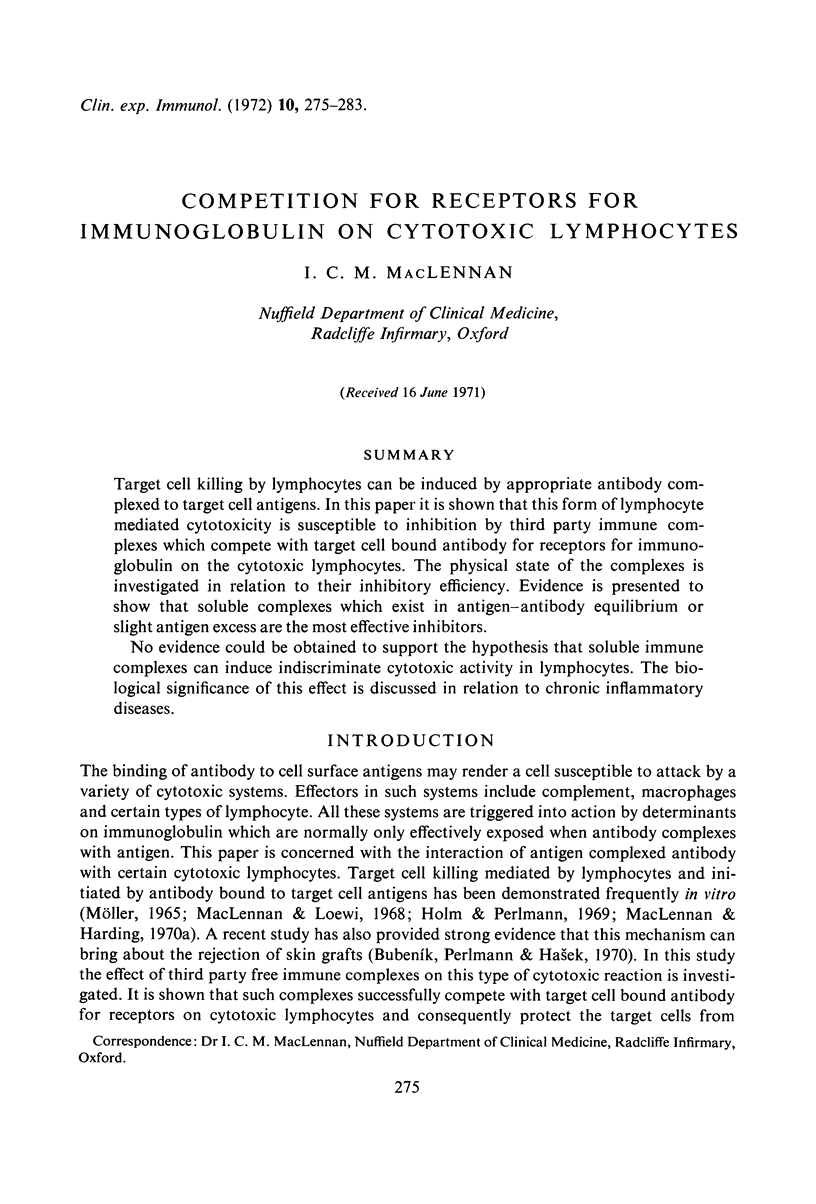
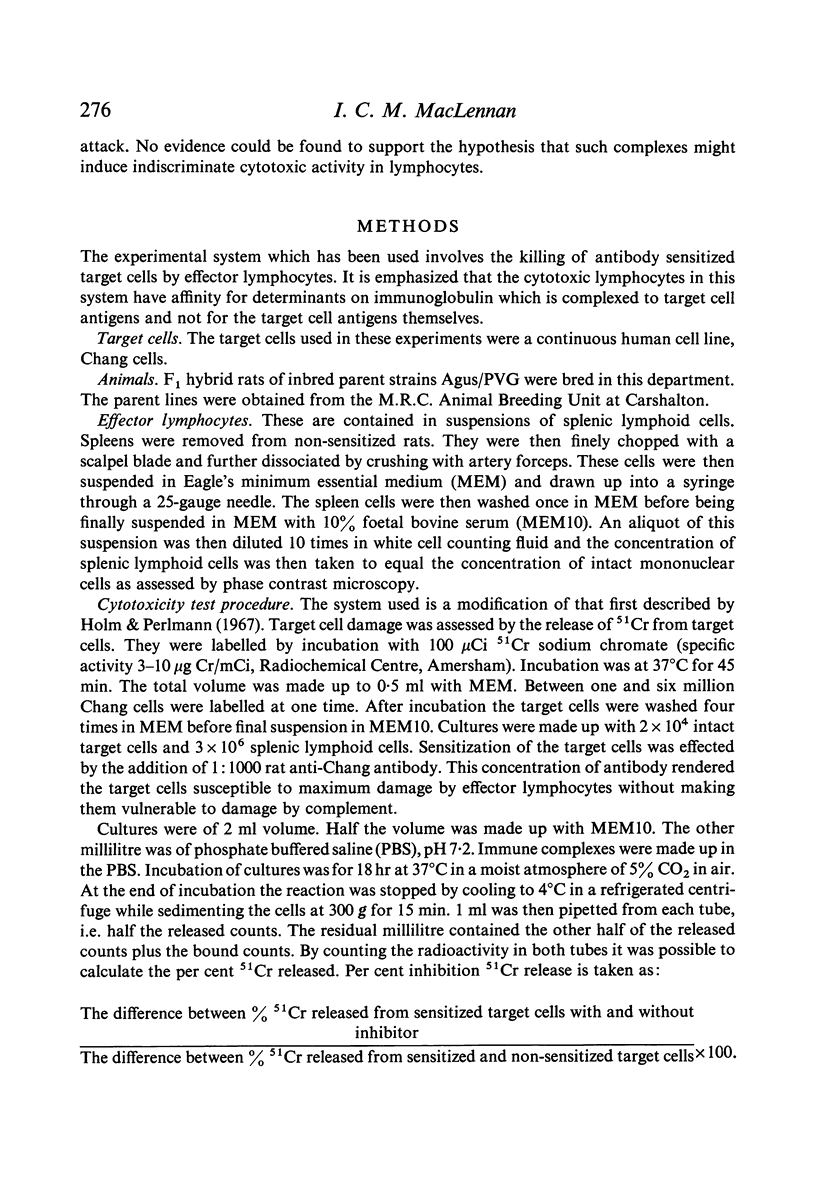

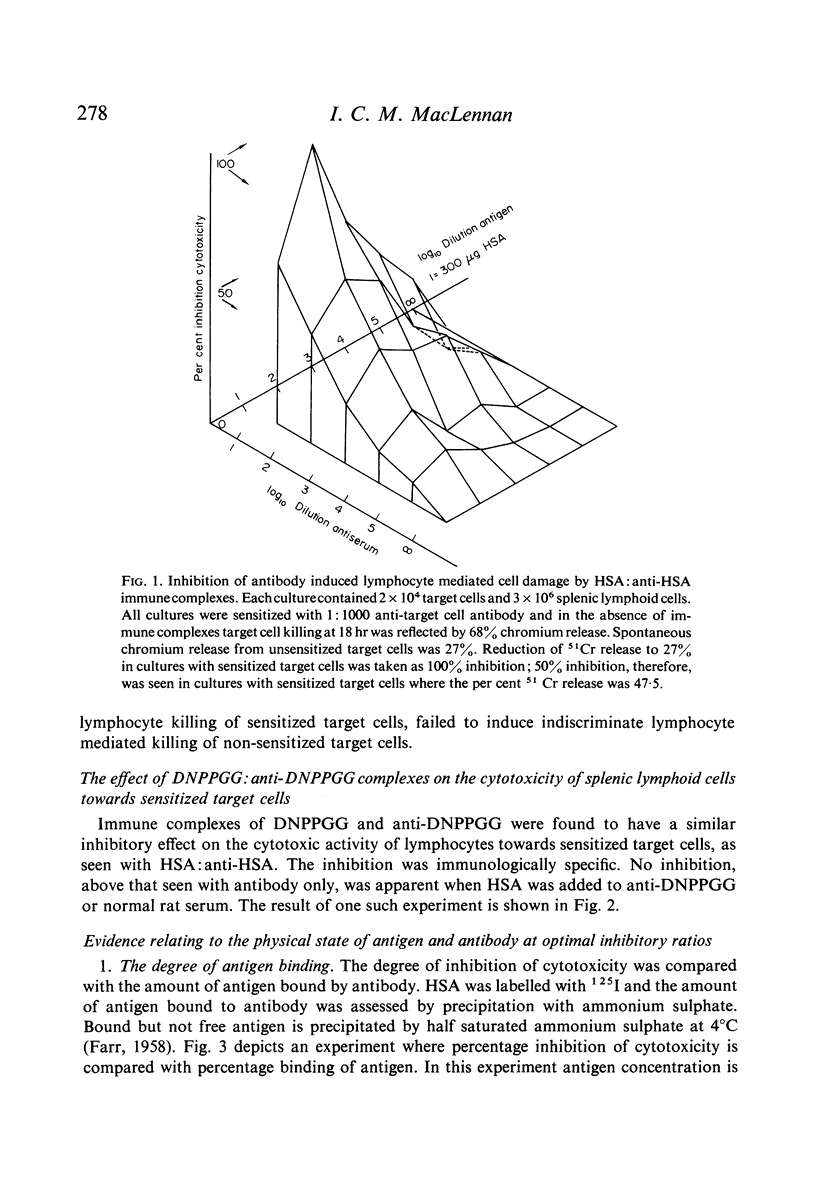
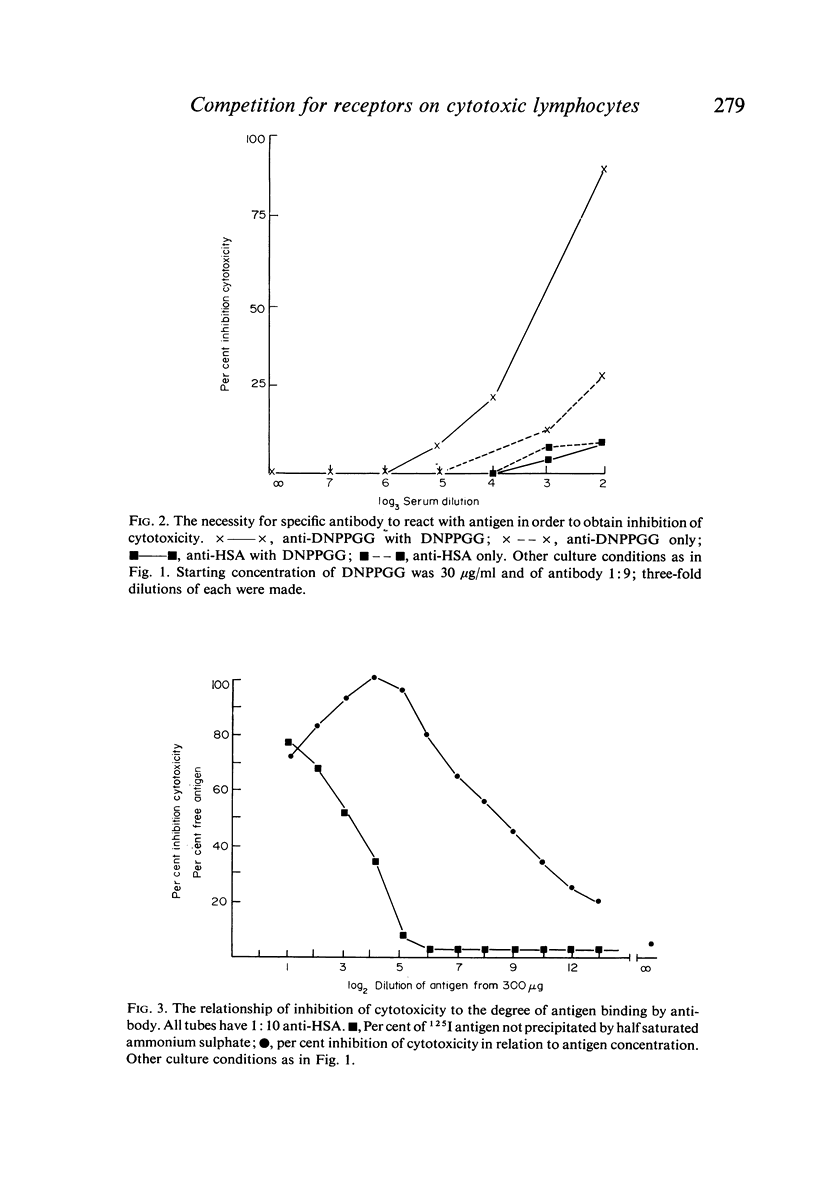

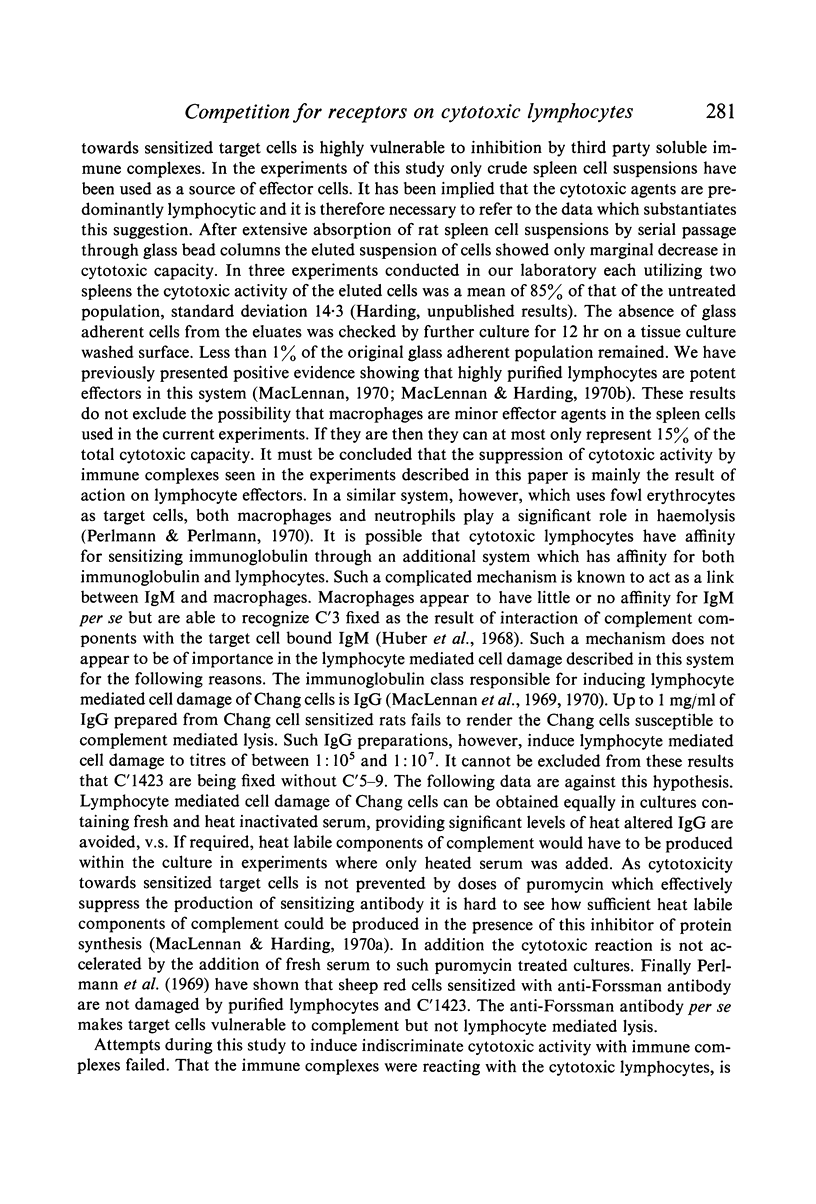
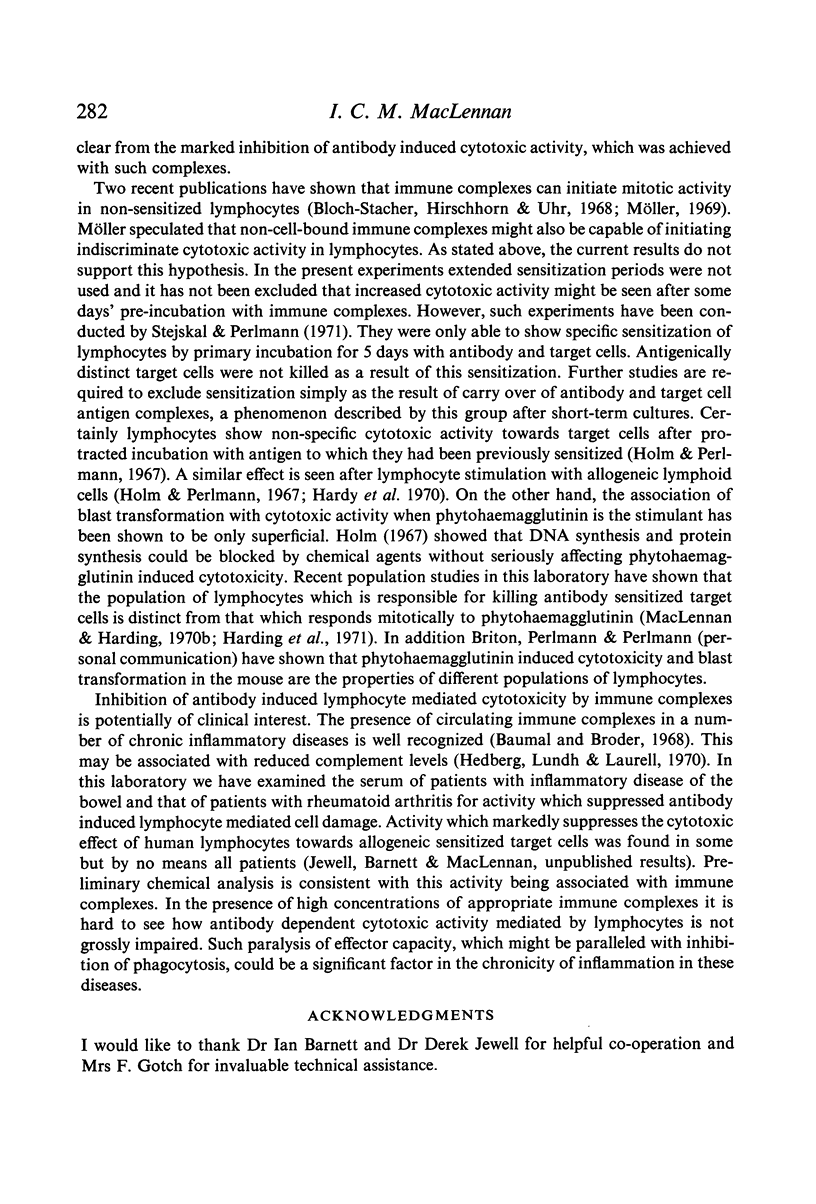
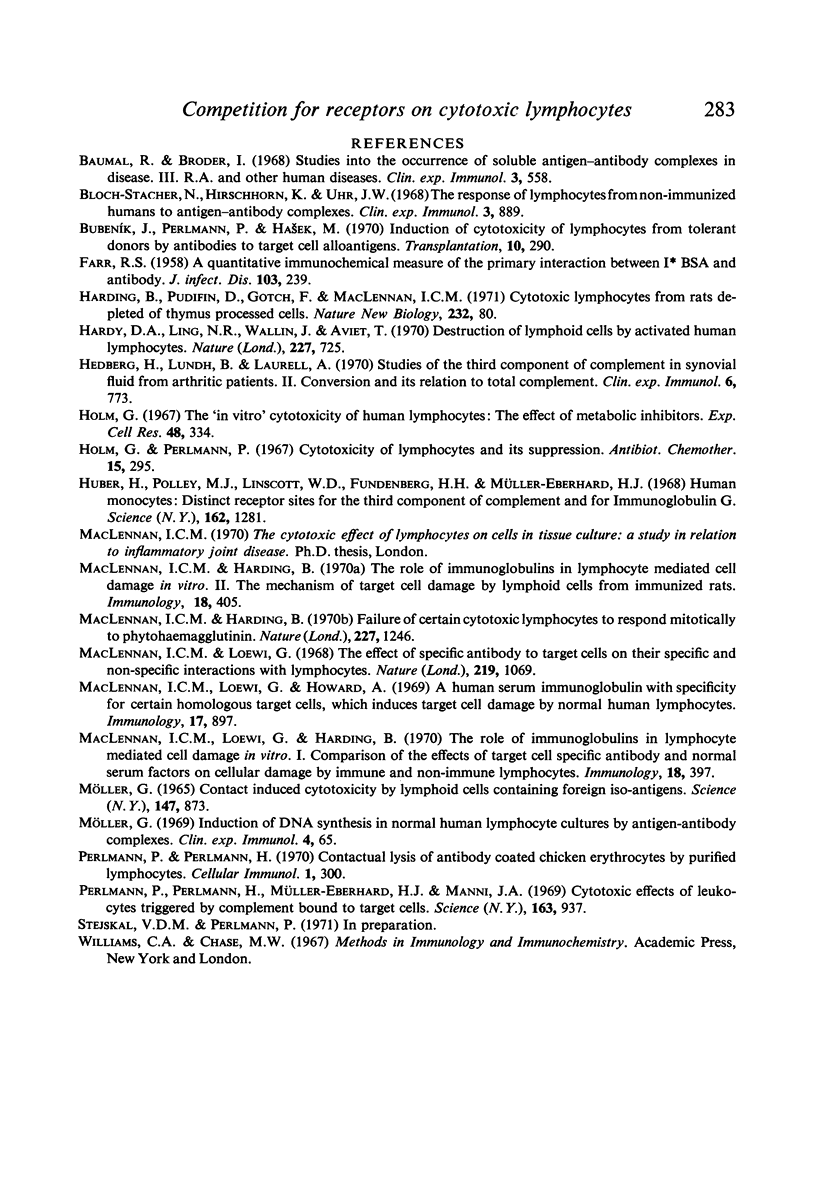
Selected References
These references are in PubMed. This may not be the complete list of references from this article.
- Bloch-Shtacher N., Hirschhorn K., Uhr J. W. The response of lymphocytes from non-immunized humans to antigen-antibody complexes. Clin Exp Immunol. 1968 Nov;3(9):889–899. [PMC free article] [PubMed] [Google Scholar]
- Bubeník J., Perlmann P., Hasek M. Induction of cytotoxicity of lymphocytes from tolerant donors by antibodies to target cell alloantigens. Transplantation. 1970 Oct;10(4):290–296. [PubMed] [Google Scholar]
- FARR R. S. A quantitative immunochemical measure of the primary interaction between I BSA and antibody. J Infect Dis. 1958 Nov-Dec;103(3):239–262. doi: 10.1093/infdis/103.3.239. [DOI] [PubMed] [Google Scholar]
- Harding B., Pudifin D. J., Gotch F., MacLennan I. C. Cytotoxic lymphocytes from rats depleted of thymus processed cells. Nat New Biol. 1971 Jul 21;232(29):80–82. doi: 10.1038/newbio232080a0. [DOI] [PubMed] [Google Scholar]
- Hardy D. A., Ling N. R., Wallin J., Aviet T. Destruction of lymphoid cells by activated human lymphocytes. Nature. 1970 Aug 15;227(5259):723–725. doi: 10.1038/227723a0. [DOI] [PubMed] [Google Scholar]
- Heiner D. C., Hague G. M., Rose B. A method for the measurement of the antigen-binding activity of immunoglobulins precipitated in commercially available radial immunodiffusion plates. Clin Exp Immunol. 1970 May;6(5):773–787. [PMC free article] [PubMed] [Google Scholar]
- Holm G., Perlmann P. Cytotoxicity of lymphocytes and its suppression. Antibiot Chemother. 1969;15:295–309. doi: 10.1159/000386787. [DOI] [PubMed] [Google Scholar]
- Holm G. The in vitro cytotoxicity of human lymphocytes: the effect of metabolic inhibitors. Exp Cell Res. 1967 Nov;48(2):334–349. doi: 10.1016/0014-4827(67)90359-x. [DOI] [PubMed] [Google Scholar]
- Huber H., Polley M. J., Linscott W. D., Fudenberg H. H., Müller-Eberhard H. J. Human monocytes: distinct receptor sites for the third component of complement and for immunoglobulin G. Science. 1968 Dec 13;162(3859):1281–1283. doi: 10.1126/science.162.3859.1281. [DOI] [PubMed] [Google Scholar]
- MacLennan I. C., Harding B. Failure of certain cytotoxic lymphocytes to respond mitotically to phytohaemagglutinin. Nature. 1970 Sep 19;227(5264):1246–1248. doi: 10.1038/2271246a0. [DOI] [PubMed] [Google Scholar]
- MacLennan I. C., Harding B. The role of immunoglobulins in lymphocyte-mediated cell damage, in vitro. II. The mechanism of target cell damage by lymphoid cells from immunized rats. Immunology. 1970 Mar;18(3):405–412. [PMC free article] [PubMed] [Google Scholar]
- MacLennan I. C., Loewi G. Effect of specific antibody to target cells on their specific and non-specific interactions with lymphocytes. Nature. 1968 Sep 7;219(5158):1069–1070. doi: 10.1038/2191069a0. [DOI] [PubMed] [Google Scholar]
- MacLennan I. C., Loewi G., Harding B. The role of immunoglobulins in lymphocyte-mediated cell damage, in vitro. I. Comparison of the effects of target cell specific antibody and normal serum factors on cellular damage by immune and non-immune lymphocytes. Immunology. 1970 Mar;18(3):397–404. [PMC free article] [PubMed] [Google Scholar]
- MacLennan I. C., Loewi G., Howard A. A human serum immunoglobulin with specificity for certain homologous target cells, which induces target cell damage by normal human lymphocytes. Immunology. 1969 Dec;17(6):897–910. [PMC free article] [PubMed] [Google Scholar]
- Möller G. Induction of DNA synthesis in normal human lymphocyte cultures by antigen-antibody complexes. Clin Exp Immunol. 1969 Jan;4(1):65–82. [PMC free article] [PubMed] [Google Scholar]
- Perlmann P., Perlmann H. Contactual lysis of antibody-coated chicken erythrocytes by purified lymphocytes. Cell Immunol. 1970 Sep;1(3):300–315. doi: 10.1016/0008-8749(70)90051-1. [DOI] [PubMed] [Google Scholar]
- Perlmann P., Perlmann H., Müller-Eberhard H. J., Manni J. A. Cytotoxic effects of leukocyres triggered by complement bound to target cells. Science. 1969 Feb 28;163(3870):937–939. doi: 10.1126/science.163.3870.937. [DOI] [PubMed] [Google Scholar]


